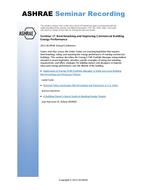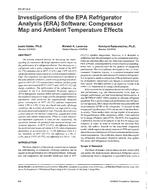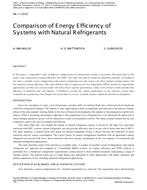The demand for new data on the thermal properties of foods, especially conductivity, can not ber¢adi1y satisfied because new products and materials, packaging, and methods of thermal processing(heating, cooling, freezing, and thawing) are continually being developed. Thissuggests that where data are not available, methods of estimation or prediction based on existingdata and known characteristics of the pertinent properties should be useful. The purposeof this paper is to discuss such methods and characteristics, with particular reference to thetherma1 conductivity data and information in the new chapter on Thermal Properties of Foods to be included in the 1977 edition of the Handbook of Fundamentals of the ASHRAE Guide and DataBook series. These data and the associated information have been carefully selected andprepared, cover a wide range of products and materials, and should be sufficient for mostpurposes, especially if methods of estimation and prediction based on given reliable data areused where no reliable data are available. Since thermal conductivity data have littleintrinsic value and are useful mainly in calculating times and temperatures in thermal processes,as well as other thermal properties, and perhaps in studying the processes themselves(e.g. determination of the rate and amount of ice formation during freezing), their use is alsodiscussed briefly.
Citation: Symposium, ASHRAE Transactions, Volume 83, Part 1, Chicago, IL
Product Details
- Published:
- 1977
- Number of Pages:
- 8
- File Size:
- 1 file , 570 KB
- Product Code(s):
- D-CH-77-05-3


